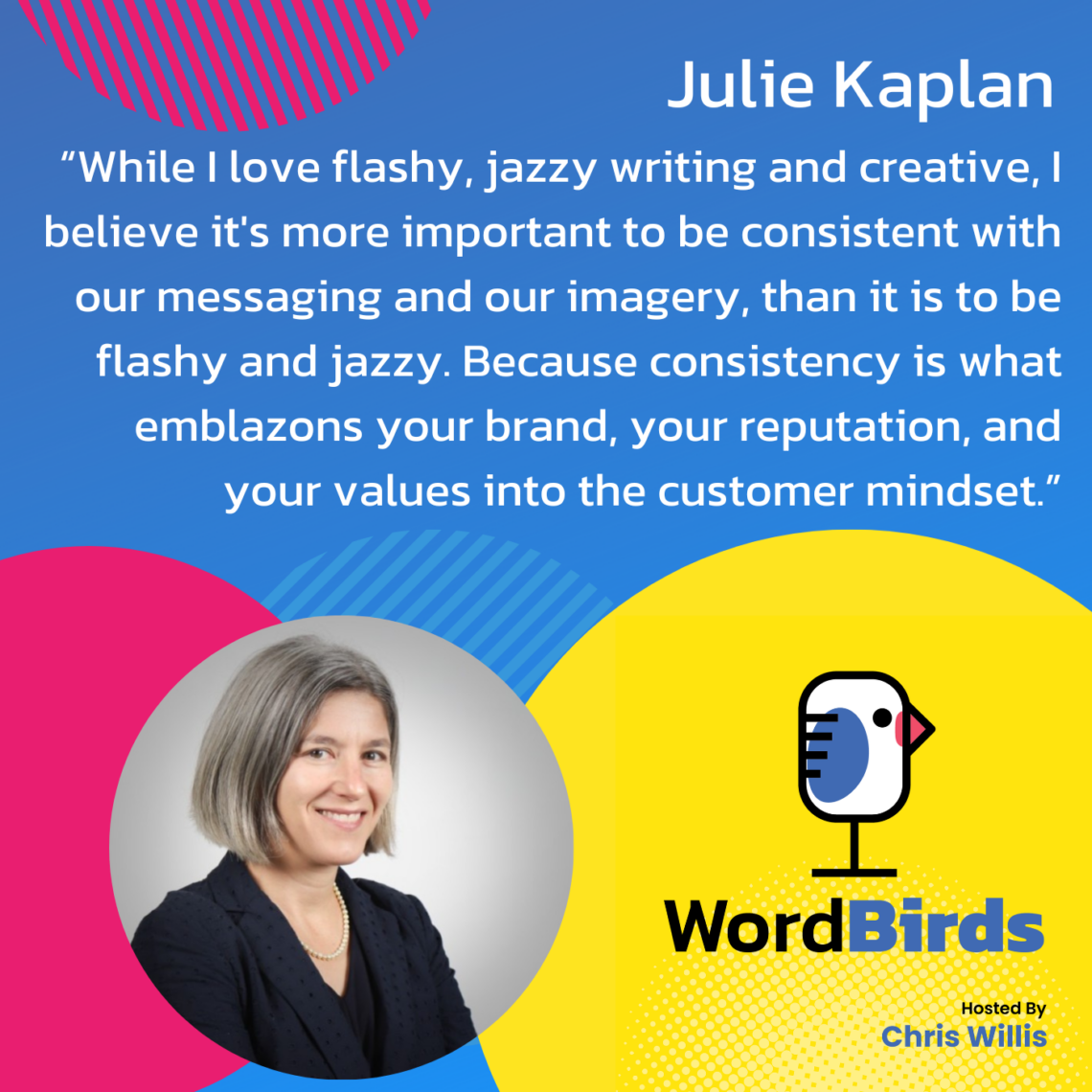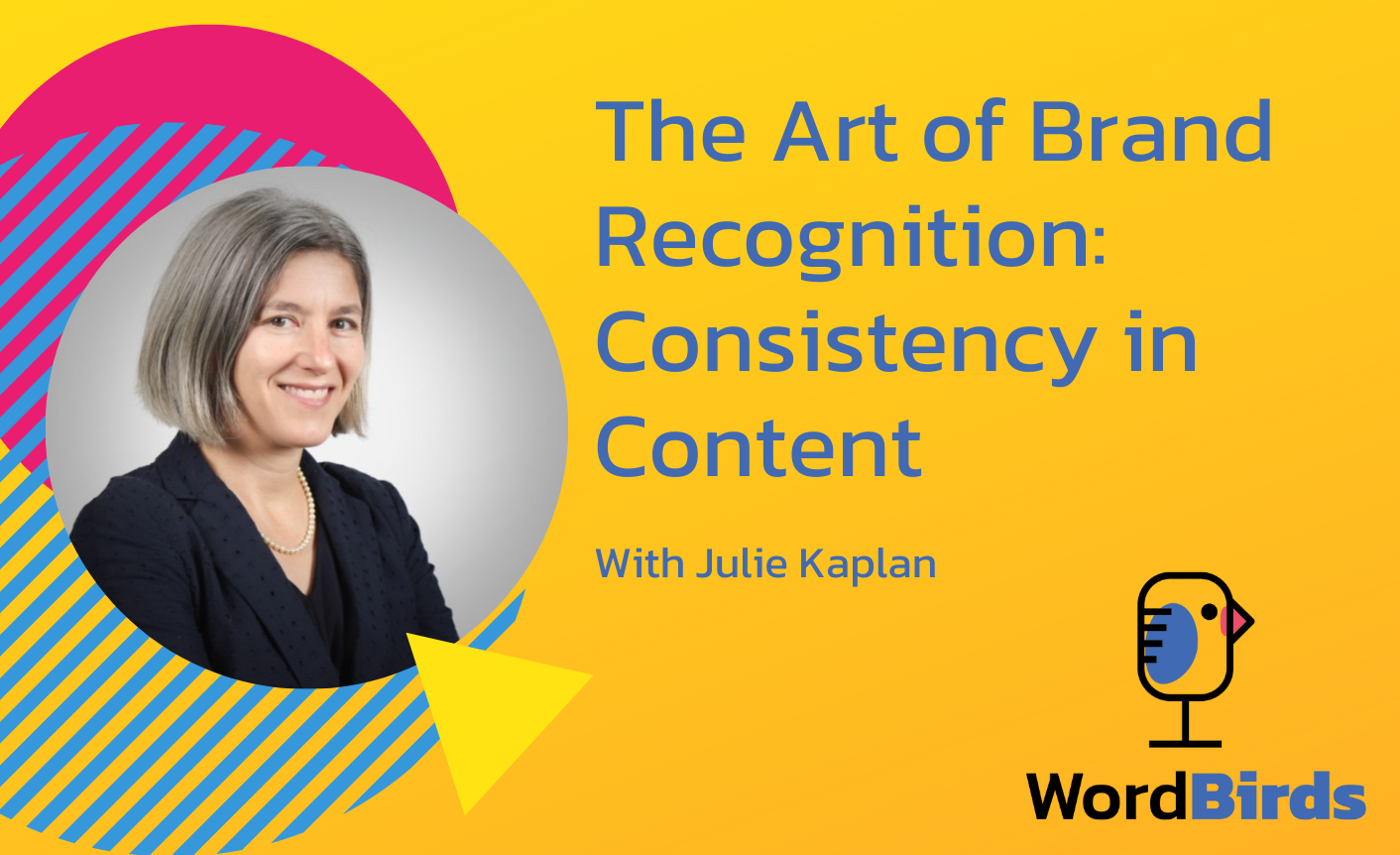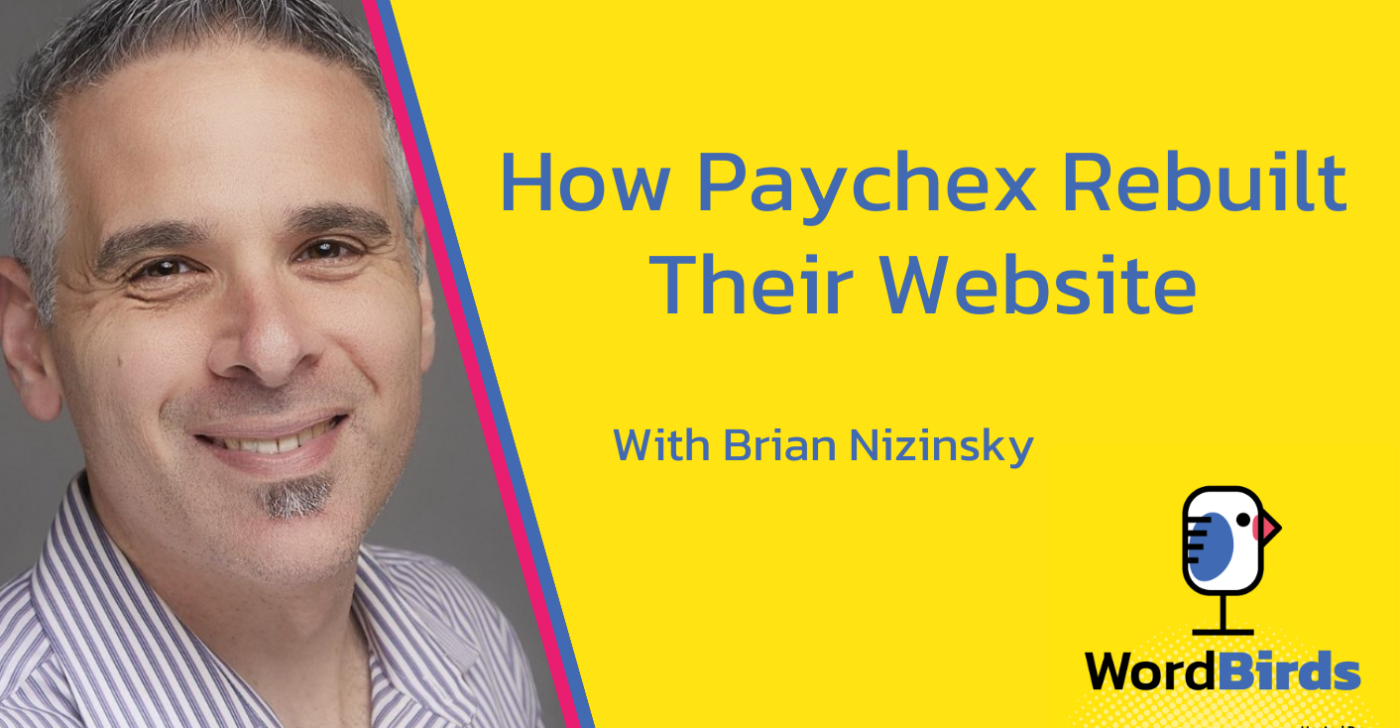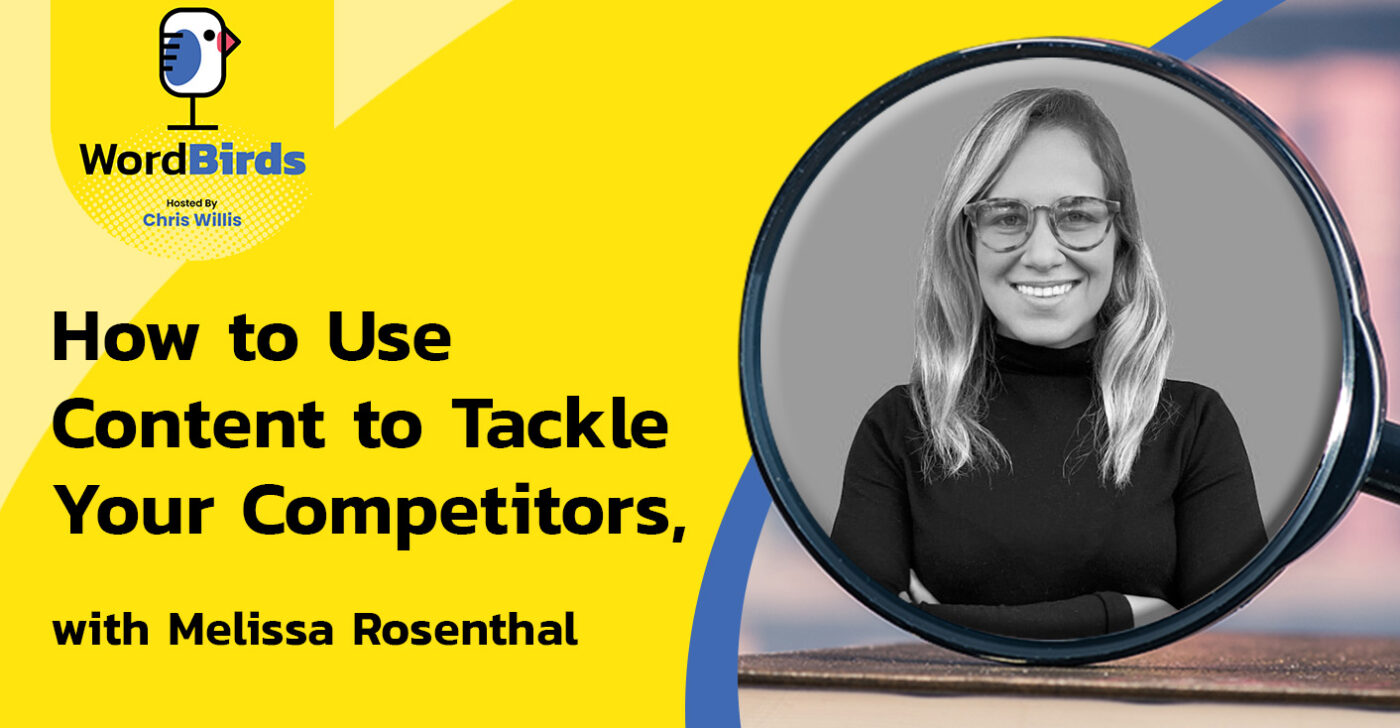Branding is more than just a logo or a catchy slogan; it’s the personality and identity of a company. It’s what distinguishes your brand from your competitors and connects you with your target audience.
In today’s episode, Julie Kaplan (Senior Vice President, Marketing and Revenue Operations at CareMetx) explains how at the heart of effective branding lies consistent content. Consistent content is critical for brand success and strong brand identity — you have to be more than visually consistent to establish brand recognition with your potential customers.
Julie also suggests that the worst content campaign is the one you don’t do. After all, you can’t learn from inaction and often the best marketing strategies come as a result of trial and error. We also explore Julie’s most successful content marketing campaign and how by providing educational value to your customers you build trust.
So, grab your favorite beverage and let’s dive into today’s episode and unlock the secrets behind building brand recognition through the magic of consistent content!
Watch the episode
Listen to the episode
Read the full episode transcript
Hello Julie, welcome to the show!
Thanks for having me! It’s a pleasure to be here.
I’m very excited to have you on the show. This season features people that I know, it’s a little different format. Julie and I are in several groups together. We talk through large complex marketing issues. And one of the things that we’re going to talk through today is content inside CareMetx, the company that Julie works at.
Let’s go ahead and jump into the quick fire. What’s the best and most successful content campaign you’ve run?
Our best content campaign was based on a report. Interestingly enough, the data for the report was actually done, or contracted for, by our owners. It was to do some deep market research in our space. And after reading the content, there were a couple of us that looked at it and were like, we should make that into a report. That became our first long-form content piece and happened to be pretty successful in drawing in prospects.
Fantastic. What was the worst content campaign?
The one we never did! We’re still very much in a learning phase here. So anything that we do, of course you want to go out with something smart and good, but we learn by doing. And right now, anything that we don’t do is the thing that I consider the worst.
I love that. So of the two, where are you learning the most? Is it the things that you don’t know or are you learning the most from things like the report?
Well, we’re learning the most from actually experimenting. So the report was an experiment, just producing the report and seeing if there would be interest. Then we used the report to experiment with what content syndication would work the best. So we learned there’s a particular publication in our industry, and that brought in the most form fills. Far and away more than any of the other things we’ve done. Everything we do, like when we break it out and when we use it for social, we’re just learning. We’re learning from what we do. Some things work, some things don’t. We repeat what works and we don’t repeat what doesn’t, or we learn from it and iterate from what works.
Tell me a little bit about the report. What’s the basis of it and how is it resonating with your audiences?
It’s called the “Evolving Landscape of Hub Services” and it tells you what’s happening in our industry. It’s a report about how buyers of our service and users of our service, who are two different audiences, view hub services and what they think is going to be important in the next five years. So that’s why it’s called the “Evolving Landscape.”
People will buy based on the company they recognize. Click To TweetThat obviously is going to have a huge benefit on your customer base because you’re going to get a better understanding of what’s needed in the market and where it should be headed. How did you use that? So you did content syndication, did you do anything else to get that word out to build that audience?
We have a small budget. So we were very focused on what we experimented with. We used content syndication, we put up a landing page, we sent out some emails, and we’ve done some social.
And that in and of itself is really blowing that report up because it’s important to people. I think that’s the biggest piece of this is that you’ve created original content that helps the people you’re trying to serve make better decisions.
That’s right, make better decisions about the types of services that we have to offer. And they’re forward looking. So it’s definitely: Here’s what you need to know for the future. It’s not a rehash of the past, but here’s what you need to know for the future.
I talked about two audiences that we researched in that report. One is the buying audience, but then there’s the user audience. We’re invisible to the users. But those users are important to our buying audience and their point of view about these services is really important. So it definitely has some unique information in there that might be hard to come by.
Beyond what you’re doing from a content campaign, are you using that in Demand Gen around ABM and reaching directly out to the people that were involved in the creation of that content?
We’re not. So it’s more like a step two. We have a very long buying cycle. 18 months. Interestingly enough, even though we’re using it in content syndication and we’re driving people to forms, it’s been our single best Demand Gen effort, even though that’s not what the initial purpose was.
I’m thinking back about the things that I’ve done like that in the past. And we started back in the 2001, 2002 timeframe, we were building a solution for 529 college investment plans. And this is six years into the internet, we were creating the first online enrollment process. The states each have a 529 plan, right? But they don’t administer it. Investment management companies administer it.

So the State of Maine, the next gen plan was administered by Merrill Lynch. We’re selling to Merrill Lynch. That’s who our prospects were. We sold to financial services companies. But we created this piece of content that rated every state plan based on the capabilities they had around online enrollment and then pitched that to the states’ treasurer’s office.
By the way, nobody calls the State Treasurer’s Office from a B2B software company, so they took our calls. Like, did you know that your estate just got rated fairly low in this survey? No, you should talk to our administrator. Oh, cool, and we did, and built a whole product line around this selling through the state to the investment management companies through this single piece of asset.
Brilliant! I love it!
That became something that we did on a regular basis with PR, outreach, and media waiting for it because we were the only voice for that particular solution in the marketplace. They wanted to know what plans were doing the best, what states were doing the most for their consumers. And I feel like that’s the same place you are. You have this individual content, that you’re just at the tip of the iceberg of the things that you could be doing with it. As you evolve this piece, build this piece out, and keep moving with it.
Yes, you’re right on the money. There’s a lot of potential in the future for this piece of content, but also content pieces like it. We’ve just begun our experimentation, we have a lot to learn, and probably not dissimilar from the 529 plans and who you were selling to at the time. This space is a little bit in the early phases, not nascent, but still early enough that people don’t have a playbook for how to sell or what to do or who to talk to or what exactly works. You’re in a complex buying cycle and how you sell to these companies isn’t like a no-brainer and who you sell to isn’t a no-brainer.
Finding who we're trying to reach is really difficult. Hence, back to the content. We need to allow them to find us based on providing them with really good value content. Click To TweetWe’re in a similar situation. It’s a complex industry. Not that I want to diminish this, but if you were selling an accounting tool to the CFO, it’s not hard to know that you need to go to the chief accountant or the CFO. We don’t have the equivalent of that. They’re all different titles, all different departments, all different levels. And by the way, 12 other influencers. So we’re still trying to figure it out.
Yes, and if you can provide value to the person that’s inside the business looking for the answer, they’re going to self-identify. And that’s where this gets really interesting. I might not see who you are, but I’m going to provide something that’s very individualized to you. You self-identify, now we have something to talk about. That’s where this whole content marketing aspect gets really exciting is when it really hits the mark. I mean, you could be spending time creating pieces of content on why hub services are really cool. But nobody’s looking for that as an answer. People are trying to identify how to do their jobs better, how to serve their customers better, and you’re creating that to solve very specific problems.
Right and they’re making decisions today for what happens six months from now, and 12 months from now, and 18 months from now. So helping them see into the future a little bit will help them feel more confident in the decisions they make. A lot of what we’re trying to do, or at least what we’ve been trying to do recently in our content, is really talking about those feelings, right? Do you feel confident? What would give you more confidence? We know that a lot of hub services providers create frustration. How can we remove the frustration for you? So it’s not just about what can we do for you, but how can we make you feel good about doing it for you?
Exactly. So, the whole approach just really targets the idea that you don’t have the biggest budget, you don’t have a huge team of content creators all over the world doing this, highly targeted, highly impactful, moves so many needles. Because that single piece of content becomes the source of so many derivatives.
On that topic, let’s talk about what everybody wants to talk about, generative AI. Are you able to take that as a source piece of content and create new content from that? Have you done any of that yet?
We’re experimenting with AI, of course. We haven’t done that, run that particular experiment yet. We still have a lot of low-hanging fruit yet to do. So the advanced techniques we’re not quite into yet, but yes, we’re breaking it apart. We’re creating blogs out of it, we’re going to create social out of it, we’re taking the big piece and then chunking it out into smaller and smaller pieces. That’s what we do. We haven’t asked ChatGPT to make it better, but it’s on the to-do list.
It’s out there. It’s very fascinating what you’re able to do and you can really tune a model to your own content.
What we’re doing with ChatGPT related to it, is we’re testing headlines. And ChatGPT is giving us better headlines sometimes than what we can come up with.
It’s taking your own eyes out of the equation. In the business in which I work, we’ve told a story that we’ve designed over the course of 20 years. We told that story for about 20 years. And so everybody’s really ingrained in the story that we tell, that we created.
Tuning a model around all the aspects of our business, and then asking it, explain what we do, based on all these things. Because we have a core product, we’ve added a new feature, we added a new feature and we still, now it’s one slide, then it was two slides, then it’s three slides of telling the story. Go back and tell me on one slide what we do here. It can look down on you from 100,000 feet in a way that is very difficult for us as people in the business to do. Will it get you 100% of the way there? No, of course not. But does it give you something more to think about? Like, oh, I never would have thought those two things go together to create. That’s really interesting. That’s the direction that we want to go in and I’m having a lot of fun with it.
People are trying to identify how to do their jobs better, how to serve their customers better, and you're creating that to solve very specific problems. Click To TweetWell, what I love about what you’re doing there is that AI isn’t going to be as committed to every word that you agonized over. So it helps you cut through some of the history.
Yes, 100%. The things that we thought were super important, it’s like, that’s a detail, that’s over on the side, here’s your new headline, and that makes a lot of difference.
Let’s dig into the sort of things that make your world different. You’re marketing in this much more scientific environment of pharma and med devices and specific personas that you go after. What are the challenges that you face on a day-to-day basis marketing to those very specific divisions within pharma enterprises?
Well, I think I alluded to it a little earlier already in that there isn’t a position I’m looking for. There isn’t a department where I can narrow it down. I’d love to be able to tell you, show me my target audience, they’re in a pharmaceutical company, they’re in this division, and this is their title. And I want everyone who fits that description.
I don’t have that option. They all have different titles. They have all different departments. They’re organized differently. Different people influence that decision. So finding our target audience within each of these large pharmaceutical manufacturers, even medium or small pharmaceutical manufacturers, is really difficult. Really, really difficult.
Think of a very, very large pharmaceutical company. They might manage 20 brands or 30 brands or 40 brands. And those people don’t know each other and they have the same title. Well, if you’re managing this brand, I don’t care about you. Not because I don’t care, but you’re not our audience. And if you’re managing this brand, I do care about you, but their LinkedIn profile doesn’t say what brands they’re working on. So finding who we’re trying to reach is really difficult. Hence, back to the content. We need to allow them to find us based on providing them with really good value content.
Add to that the challenge that you’re looking at people that are involved in brand and very often brand leaders don’t have a budget. So you have to find the people around them that actually want to spend money because they’re great in meetings. They get completely what you do. “This is fantastic. I totally understand how we would use this.” “Cool. Can you buy this?” “No, I can’t buy this. I don’t have a team or a budget. I’m a brand leader.” Oh, well that’s challenging.
Even though we're using it in content syndication and we're driving people to forms, it's been our single best Demand Gen effort, even though that's not what the initial purpose was. Click To TweetSo yes, pulling those people out of the woodwork, letting them identify themselves around the questions that you’re answering in the marketplace drives them right into your hands. So, the flip side of this is that it’s about being patient-centric in your space. Despite selling to the business, how do you manage to make sure that your content is patient-centric?
It’s a really good question and we think about this every single day, every hour, every minute if we can. So we’re selling to pharmaceutical manufacturers, but the person benefiting, not necessarily using our services, is a patient. So if everything in the world works correctly, the way we want it to, they have access to specialty pharmaceuticals faster when we do our job right. And we always do our job right, of course.
So if they work with us, patients will get access to their medications. They’re more likely to adhere to their medications if they’re working with us. We can’t forget about that. If we don’t do our job right, there’s someone who needs something critical to their lifestyle or their life. Any delay couldn’t have a positive outcome for someone at the end of it. We can just never lose sight of that. So what we’re trying to do is make the patient story inextricable from the pharmaceutical manufacturer story. And we don’t take it for granted because it seems obvious that that’s what they care about. And it is, but we just try not to ever separate that.
So when we did our website, we focused on what is the patient journey and how do our services dock into that? Not here are our services and here’s where the patient comes in and out, but this is the patient. This is the journey they follow. It’s complicated. Here are the various points where we can help make that journey easier, better, faster, and facilitated.
So it’s sort of a complicated two-level customer experience on your website even. Because you’re communicating a client experience, a patient experience, that’s going to be seen by the business that’s going to buy your product and supply it to the patient. So you have to think about everybody in this equation. It’s not just, here’s what I do for you, pharmaceutical company, it’s here’s what I do for your clients and if you implement this, you’re going to have better relationships with your clients.
We're learning from what we do. Some things work, some things don't. We repeat what works and we don't repeat what doesn't, or we learn from it and iterate from what works. Click To TweetWell, the people trying to get access to their medications or specialty medications will get it faster. That’s what they want. That’s what we want. That’s what everyone wants.
It’s not a bad place to be. Faster is better.
Let’s talk about the PSOTD. That’s the Provocative Statement of the Day. It’s a thing that you believe that maybe everybody doesn’t believe. Maybe people won’t even agree with you. Maybe I won’t agree with you. I kind of hope I don’t. What’s your Provocative Statement of the Day?
While I love flashy, jazzy writing and creative, I believe it’s more important to be consistent with our messaging and our imagery, than it is to be flashy and jazzy. That’s hard. That’s hard for many marketers to contemplate.
It is. Why do you think that?
Because consistency is what emblazons your brand, your reputation, and your values into the customer mindset. Flashiness can do it a moment in time, possibly. But when you’re a new brand or a new-ish brand and you’re competing against Fortune 500 companies, you need to make sure that it’s solid, it’s consistent, that they’re not questioning what you say from one conversation to another.
You need to be consistent with your messaging. It needs to carry through every part of their experience with your brand right from the marketing to the conversation with sales to the conversation with finance to close the deal, to do the conversation with customer success to make sure that they’re successfully implemented and have a great post-sale experience. If you’re off, it just creates a reason to question what you say.
Do you have a top-level tip to somebody entering your role at a different company on how to do that?
Yes, just use the same visuals, use lots of templates, unless you’re ready to puke when you see it, you haven’t used it enough.
I think it’s so interesting that you say this because I don’t disagree with you at all. I think it’s actually critical.
Oh no, you wanted to disagree with me. Oh, I’m sorry!
I did, but I’m jumping on this train because I think it’s something that many companies don’t think about as much as they used to. I always use Oracle, mid-2000 era, as an example. When you would see the red bar at the top of the slide, you knew you were in a meeting with Oracle. And they just managed that brand imagery really well. Everything went together, everything was aligned. You knew who you were meeting with.
You could go even further back than that into the 90s. There was a cartoon character with a red hat. That was the Limp Bizkit album. You knew wherever that went, where you saw that red hat, you were listening to Limp Bizkit.
While I love flashy, jazzy writing and creative, I believe it's more important to be consistent with our messaging and our imagery, than it is to be flashy and jazzy. Click To TweetNow businesses don’t think that way. There’s a lot of experimentation and we’re always changing imagery. We’re always changing the look and feel. It doesn’t transcend with the business. There should be one thing and it can be hierarchical and there are things underneath that top level brand that can change and evolve, but at the top level, you’re a thing that’s recognizable and that’s value to you.
You’re building up value in that brand, both written and visual that’s difficult to replicate elsewhere in the business because that brand builds premium buying guidance. People will buy based on the company they recognize. So if there’s two companies and one company’s doing it well and one company’s doing it poorly, it’s likely the company that’s doing it well is making more money. But yet, we get all creative and we try a lot of things and we play with all kinds of colors and things get lost and you’re not that in the market.
Right, so what’s your favorite song?
Um, let’s say Hotel California.
Okay, do you know all the words to Hotel California?
Probably a bunch of them, yeah.
Okay, so what if every other time they played Hotel California on the radio way back when, when there was a radio, the words changed. You know Hotel California because the words don’t change, right? Welcome to the Hotel California. If sometimes it started there and sometimes it didn’t, it wouldn’t have the same impact. You wouldn’t remember it as easily. It would take you much longer to understand the concept of the song. It doesn’t change. Sometimes there’s different execution of that song, but the words are the same and that’s why you know the words.
I love that whole example. Fantastic. Julie, thank you very much for being on the show. This was fantastic!
Thanks for having me, it’s been really fun talking with you.
Important links
- Julie Kaplan – LinkedIn
- CareMetx
- WordBirds – LinkedIn
- WordBirds – Home page



